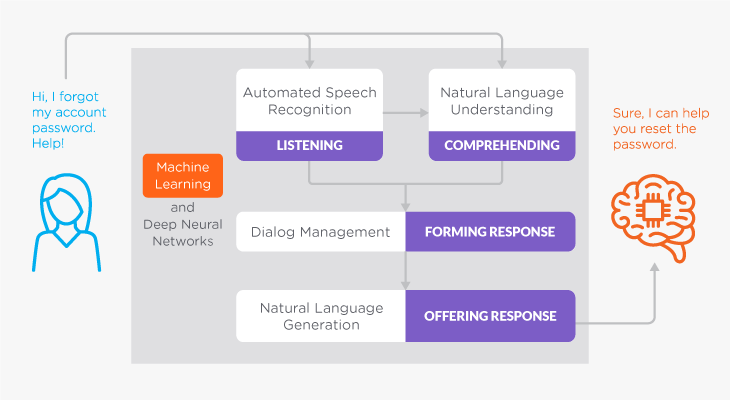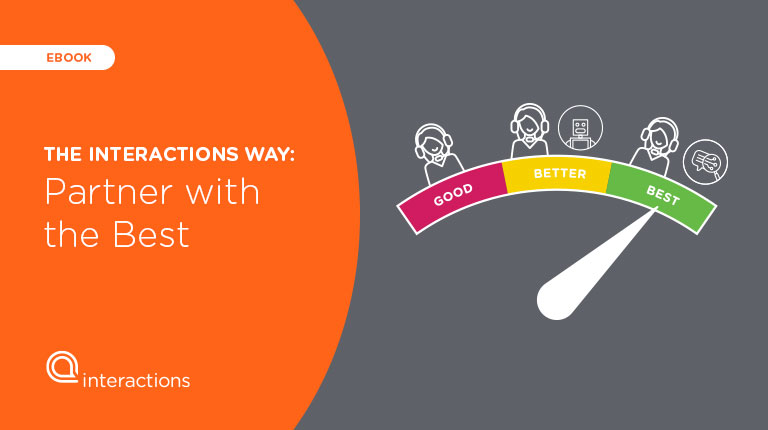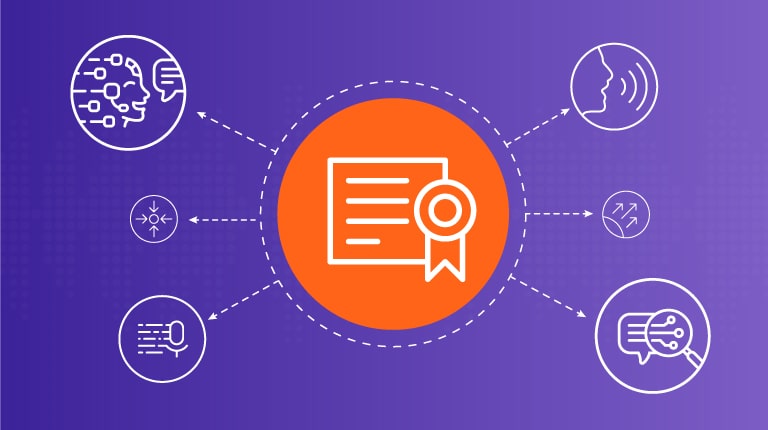Do you remember the mad dash to do the required reading before the start of the school year? The memories of rushing to start the year off on a good foot, and to ensure that happened, having the Cliffs Notes versions nearby to provide a memory refresh of important details was imperative.
Similar to the required reading during school years, Conversational AI is complicated and can require some brushing up of details. It can be overwhelming if you are just starting to learn about it. This “Cliff Notes to Conversational AI in CX” outlines key information and must know takeaways. Ready to jump in?
Chapter 1: Main Character Energy – Meet Conversational AI
Conversational AI applications are being used by many brands today to automate tasks via self-service and improve both customer and agent experience. Businesses that implement Conversational AI applications also see additional business benefits beyond improved customer experience, including improvement in CSAT, decreased expenses, elevated agent value, better labor optimization, and immediate scalability.
Conversational AI is not just one technology. It’s rather a set of technologies behind automated messaging and speech-enabled applications that offer human-like interactions between computers and humans. It provides human-like communications by recognizing speech and text, understanding intent, deciphering different languages, and responding in a way that mimics human conversation.
Chapter 2: Behind Every Great AI, There Are Supporting Characters
In order to make an efficient and accurate Conversational AI application, like an Intelligent Virtual Assistant (IVA), there are a number of technologies that it must incorporate: Automatic Speech Recognition (ASR), Natural Language Processing (NLP), dialog management, and machine learning. Each of these technologies work in unison to understand, reach, and learn to communicate with humans in a natural and free-flowing manner.
Altogether, these core technologies help the IVA make sense of what customers are asking of it so it can empower truly effective self-service.

Chapter 3: The Main Theme
Conversational AI applications like IVAs are the key to exceeding customer expectations. An IVA can help you provide an omnichannel customer experience that is not only personalized, but also maintains context as customers move across channels.
With Conversational AI, customers can also speak naturally and be understood, despite typical challenges faced by customer service automation including background noises, exchange of alphanumeric information, multiple speakers, different languages, and even accents. One of the biggest benefits of implementing Conversational AI is the ability to blend artificial and human intelligence. With continuous and supportive customer service, Conversational AI assists consumers directly when it’s able and learns from its human counterparts when it needs help, creating an experience that is both efficient and authentic.
For the purpose of exceeding customer expectations, Conversational AI applications can offer customer control, effortless interactions, and personalized conversations. The result is automated experiences that are indistinguishable from what could have been delivered by your best agent. This type of customer care at scale puts the customer’s happiness at the forefront of the interactions, promotes loyalty and keeps people coming back.
Chapter 4: Discussion Questions to Spark Conversation
After reviewing the characters and theme, it’s time to dive into some thought-provoking discussion questions. In the spirit of Cliffs Notes, these questions serve as conversation starters, designed to distill complex concepts into digestible insights and ignite conversation.
Q: What are some examples of Conversational AI applications?
A: One of the more popular uses of Conversational AI in CX is a virtual assistant, with the most technologically advanced and beneficial being an IVA. IVAs are designed to provide a seamless customer experience so customers can talk or type just like they would with a human and control where, how, and when they want to interact (buzzword, omnichannel).
Q: How does Conversational AI improve CX?
A: IVAs provide customer service conversations at scale, offering a more conversational and natural way for consumers to interact. Consumers are not limited to typing or speaking in a certain way or using specific words or text to solicit responses. The result is a more effective and productive interaction that mimics a conversation with a real human and results in excellent customer service.
Q: What role can Conversational AI play in optimizing a business’ labor force?
A: Automating tasks and offering customers more self-service options via virtual agents allows businesses to do more with less. Customers can take care of what they need to do efficiently and conveniently, while brands can use human agents where they can make the most impact. The result is a better experience for both the customer and the agent.
As self-service innovations continue to evolve, their significance will only be amplified in the future. Read this Opus Research report to learn more about the future of customer care.
Q: How does Conversational AI reduce operational costs?
A: Automating tasks increases efficiency that can lead to reduced costs. Because virtual agents can also scale easily to accommodate increases in volume – both seasonal and unplanned events – they can reduce hiring and training costs associated with this volume.
Q: Can Conversational AI help grow a business?
A: Hiring rates can affect the growth of your company. When you can’t hire, you can’t grow. Automation with virtual agents supports business growth in this situation by optimizing the labor you have available.
Q: Human agents are still important. How can Conversational AI help support them?
A: While virtual assistants are the most efficient solution to quickly solve customer problems, they’re limited by what they can see, reach and understand. They can only respond to what someone shows them, access what’s available to them and understand what they’ve been trained on. The alternative of transferring calls to a live agent creates wasted time, both for the customer and for the contact center.
And yet, human agents remain important and play a vital role in customer experience, as they are often the face of the organization and the primary contact point for customers. Their interactions can significantly impact a customer’s overall experience with the business.
As such, Interactions developed a uniquely human approach to customer service, using a technology called Task Orchestration.
A human agent can “help” give direction to the virtual assistant in how to proceed, supply missing information it doesn’t have access to and provide authorization to complete a transaction. Crucially, human agents are only looped in at the precise moments they’re needed, allowing the virtual assistant to maintain the rest of the customer interaction. This approach empowers customers to self-serve without having to be escalated directly to an agent, even for those tasks previously thought too complex. The net result is increased customer satisfaction and dramatically improved agent efficiency.
Chapter 5: The Pivotal Moment – Find the Right Vendor
In a world of high demands and countless inquiries, meeting consumer expectations isn’t just a goal; it’s a commitment. By now you know this, but getting started can seem daunting, quite like the first day of school.
While it’s easier said than done, the right vendor can make a critical difference in the type of experience you deliver. Just like technology, vendors differ in their type and area of expertise, scalability, and proven results. It’s imperative that your decision-making process includes vendor vetting where you ask detailed questions about experience, design, and referenceable results to ensure your application works exactly the way you want your brand to be represented.
One of the most crucial decisions you will make is choosing a vendor to partner with who has the expertise in design as well as proven results.





